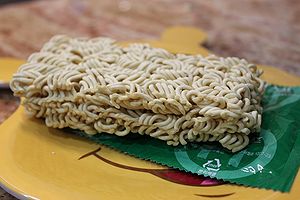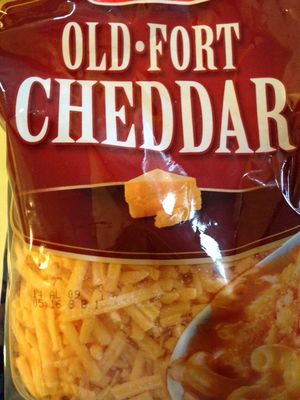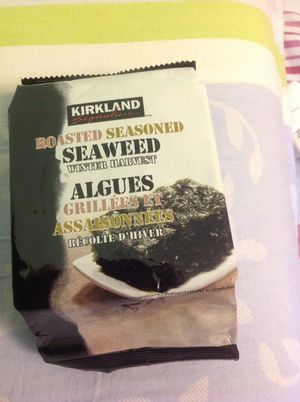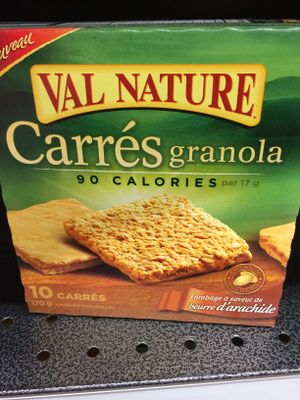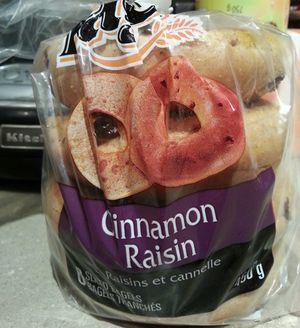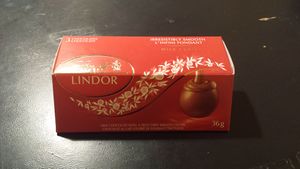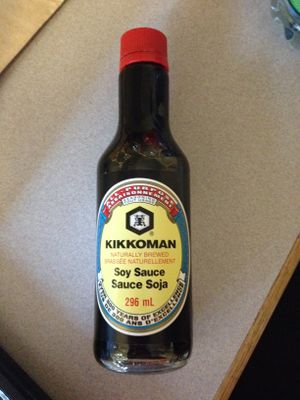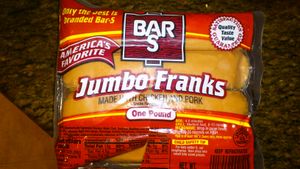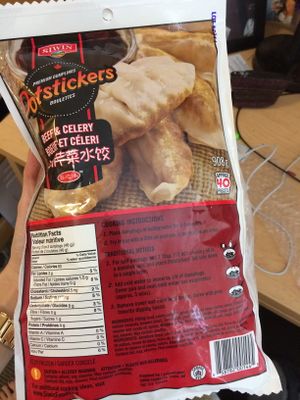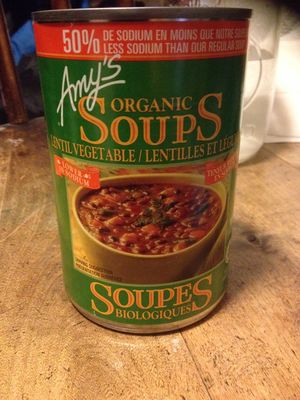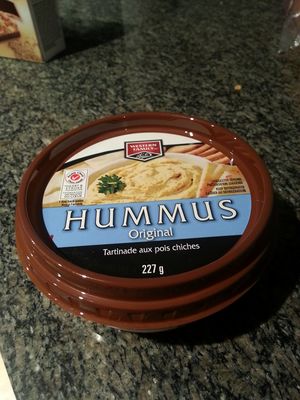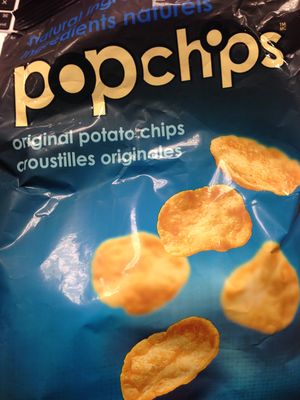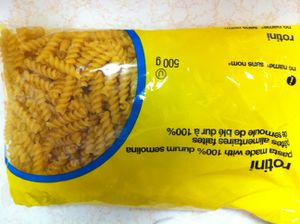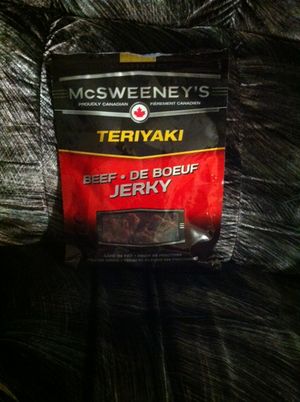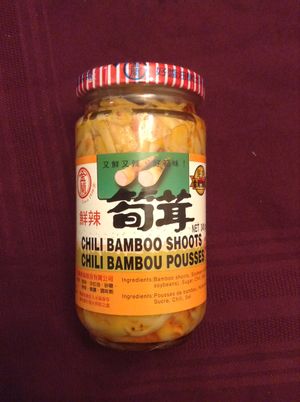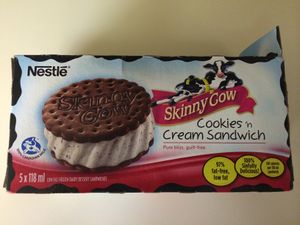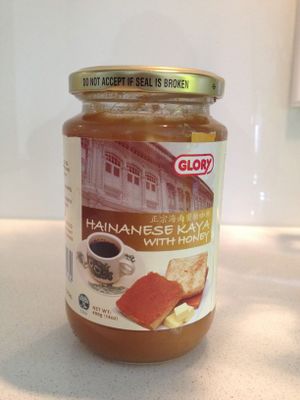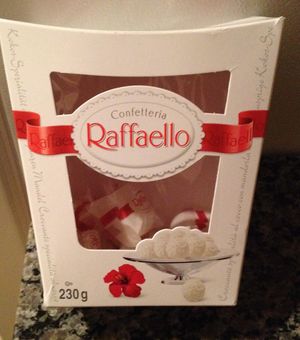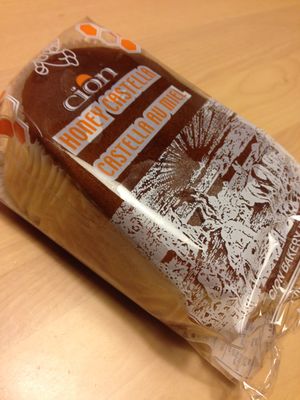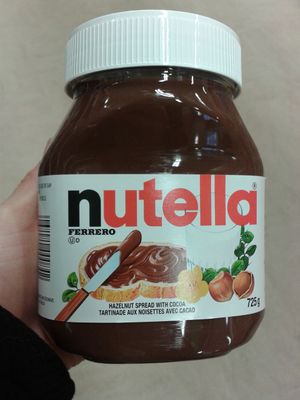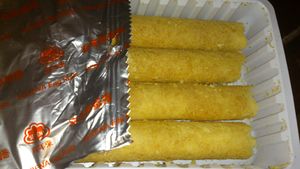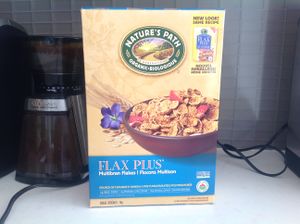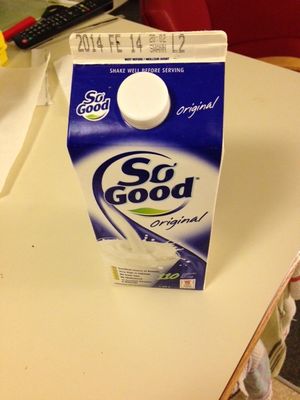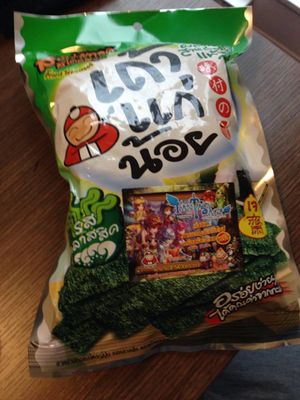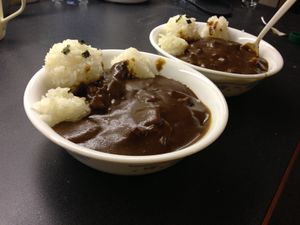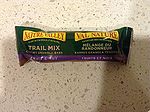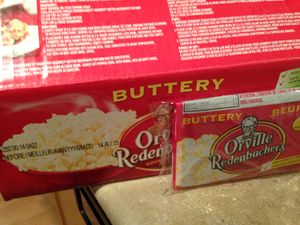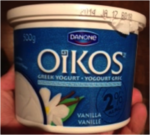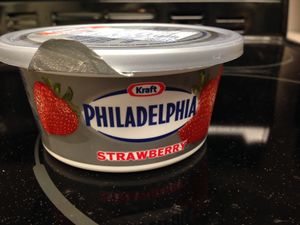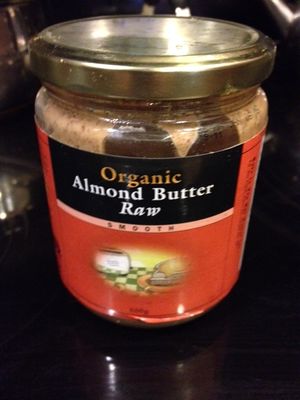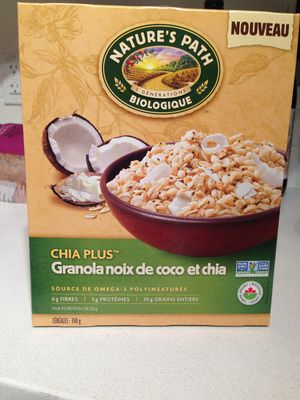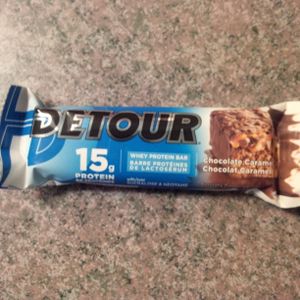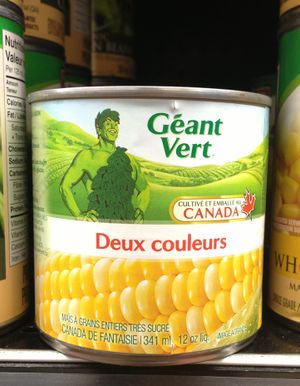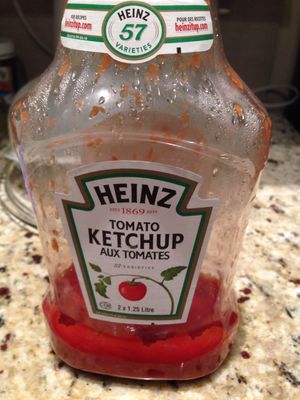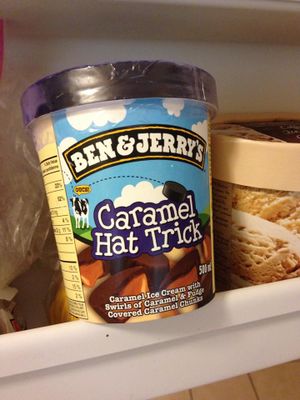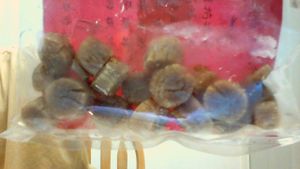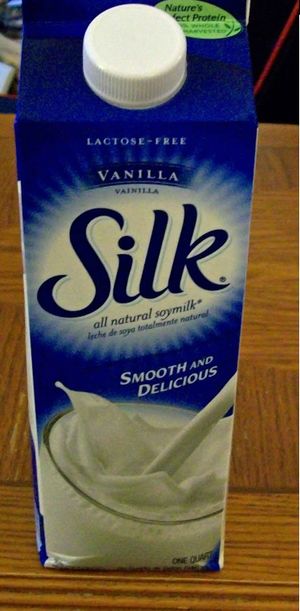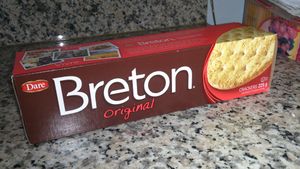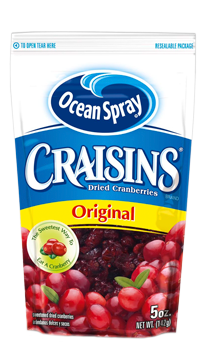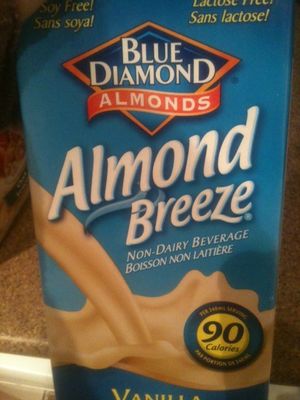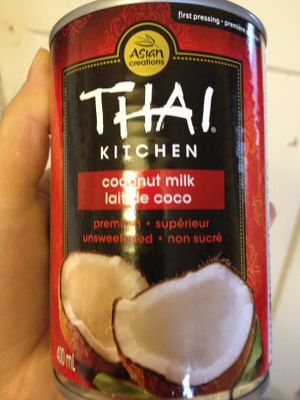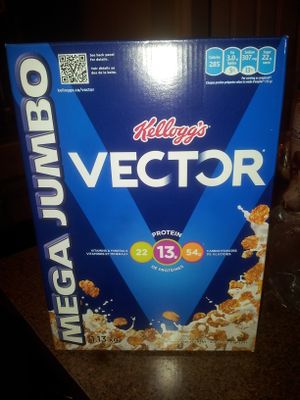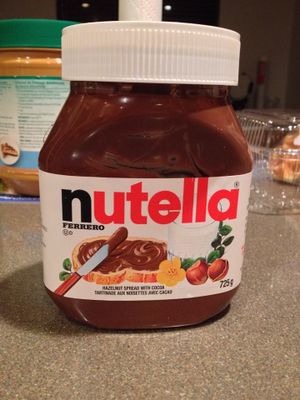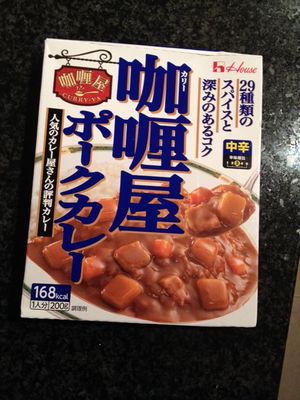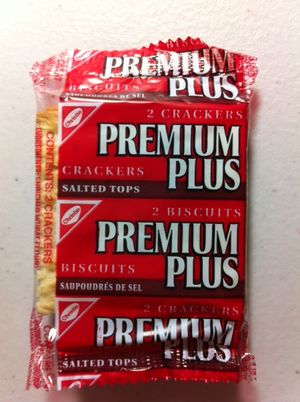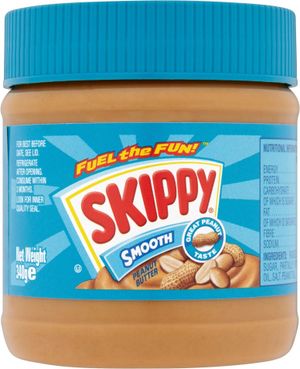Course:FNH200/2013w2/Assignment01
Assignment #1 and Assignment #3
Assignment 1
The learning goals of Assignment #1 are to help you:
- familiarize yourself with UBC Wiki by
- creating a UBC wiki ID
- uploading a photo of a food you like or are curious about
- posting it on a pre-set UBC wiki table
- identify what exactly you like to explore about a food you like
Assignment #1 Activities
- Take a look at your pantry, drawer, and/or refrigerator, or browse around at your favourite grocery store
- Identify a processed food that you like to explore more
- Snap a close-up photo of the food or its packaging
- Login to UBC Wiki with your CWL (Reminder: The UBC Wiki is an open site. Your activities on UBC Wiki can be accessed, viewed and evaluated by everyone. Please be mindful when you create your ID.)
- Upload the picture on UBC wiki (follow the Upload File link on the left panel)
- Post your picture in an appropriate space below (check this for how to add an image)
- Describe briefly (in less than 50 words) why you selected this particular food
- List 5 scientific questions you have about this food
Please submit your assignment #1 by your last name (surname or family name):
Assignment #3 - A Reflection on Learning Due Date: Tuesday, April 22, 12:00 noon
This is a time to revisit what you wanted to learn and some questions you had about foods at the beginning of the course. Here is what I expect you to do as your last assignment for FNH 200.
- Revisit the questions you asked at the beginning of the course (in alphabetical order of your last name below)
- Are you able to answer them?
- If yes, please answer your own questions to your best ability. Please also provide the Lesson # that associates with your answer.
- If not, try to make connections with concepts you've learned. Educated guesses are welcome, but no wild guess please. You may want to speculate where you may be able to find the answer to your questions, such as academic/research literature, government websites, food associations sites, health organizations, etc. Answers such as 'I will google it later' is definitely not enough :) .
An example on instant noodle is provided below. I've tried to answer the questions as a 2nd year FNH 200 student :)
For Example, Under family name C
Your Real Family Name that Starts with A
Your Real Family Name that Starts with B
| Your Wiki ID | Photo of a Food You Like to Explore | Why Did You Select This Food? | Questions You Have about This Food |
|---|---|---|---|
| Banki , Paniz | [[1]] | ketchup is my favorite sauce and I use it with lots of different foods | 1-Do I need to refrigerate ketchup? Does it make its shelf life increase?
2-what makes the ketchup a processed food? 3-are there real tomatoes inside the ketchup? 4-what makes it unhealthy? 5-what are better substitute for it? 1-because ketchup is naturally acidic it is shelf stable. But the stability can be affected by storage conditions after opening. So it is recommended that this product like other processed food be refrigerated after opening. Refrigeration does maintain the best quality after opening. Also it is also good to look for the ‘’best by’’ date on the cap or back of bottle. 2-Long shelf life, ingredients and the process of making the food, and the need to refrigerate after are all the sings of the processed food.3-Yes. Real tomatoes are used in ketchup. The tomatoes must also be good quality tomatoes for their product. Best tomatoes are superior in color, flavor, texture, and yield. Consistency is an important factor, as slight variations in tomato characteristics could alter the flavor and color of the finished product.4-you can also make ketchup in your kitchen which gives you the advantage of controlling the amount and type of sweetener, as well as all other ingredients. Two tablespoons of this ketchup has approximately the same amount of sodium as 2 ounces of salted peanuts or potato chips—roughly 16% of your sodium daily intake.5- try fresh salsa instead of ketchup. Remember, you can cut down drastically on the amount of sugar a recipe calls for, as well as substituting more healthful natural sweeteners. |
| borlandh | 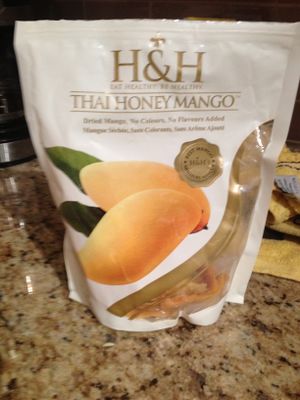 |
I love dried mangoes - there are sweet but also a healthy snack. I eat them almost every day. I try to get dried mangoes that don't have any added sugar and are natural. | 1. How do the mangoes stay fresh? From Lesson 8, the mangoes stay fresh because of case hardening that occurs during the drying process due to the high content of natural sugars in the fruit, as well as proper packaging of dehydrated foods to ensure no moisture gets inside the sealed package.
2. How do they get dried? From Lesson 8, mangoes are dehydrated by tray drying in a oven designed for commercial dried mango production which removes a large portion of the fruit's water content. 3. How do they keep their colour? From Lesson 8, dried mangoes are able to stay fresh because dehydrating them is a means of preservation, the case hardening also helps protect the product from an oxidation or chemical reactions that would brown the fruit. 4. Are certain mangoes better to use/ do they last longer than others? I didn't find any information that one type of mango was better than another for drying, but noted that it was important to dry the mangoes when they are at their peak ripeness for maximum sweetness. 5. How many dried mango pieces should you eat in day before it is unhealthy? Most brands of dried mangoes, like the brand i use, has about 160 calories for 6-8 pieces. I think this is a good serving size for a snack, but that we shouldn't consume more than that on a daily basis because of the high sugar content. However, it is a much healthier alternative to snacking on potato chips or a candy bar. |
| jsbe | 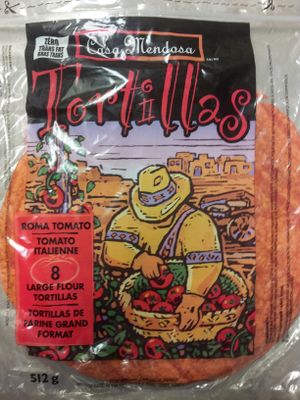 |
You can put anything in a tomato tortillas and it always ends up to be a tasty snack. It is also very easy to prepare. I love tortillas! |
1. Are there real tomatoes in the tomato tortillas? If so, how are the tomatoes processed in tortillas? They are picked, dried, and powdered before mixing in with flour and other ingredients before made into a tortillas. 2. Does the shelf life increase if the tortillas are put in a fridge/ freezer? From lesson 7. Yes, shelf life increases if the tortillas are put in a fridge/ freezer. Refrigeration temperatures inhibit the growth of most disease-causing microorganisms but favour the psychrotrophic spoilage-causing microorganisms. Some spoilage-causing microorganisms, particularly moulds, can grow at temperatures as low as -8°C. Lesson 8, Also when food is frozen, there is less free water which prevents growth of moulds etc. 3. Are tortillas generally healthier than bread? Depends on what the tortillas are made from. However, whole-grains are more healthier than white grains because whole grains contain greater proportions of finer and nutrients. Since white flour is more processed, it loses more nutrients during the processing compared to whole-wheat which is less processed. 4. Is the red colour of the tortillas artificial? In the specific tortillas displayed in the image, Tartrazine is added to give a red colour to make it more appealing for the consumers. However, some tomato tortillas do have a red colour depending on the processes of making the tortillas. 5. Why do tortillas get hard when left out in the open? From Lesson 8. The tortillas become hard when left out in the open because of the process of dehydration. The water content in the tortillas leave making the tortillas hard. In order to prevent this is to have a seal to prevent loss of water. |
| ebenedon | 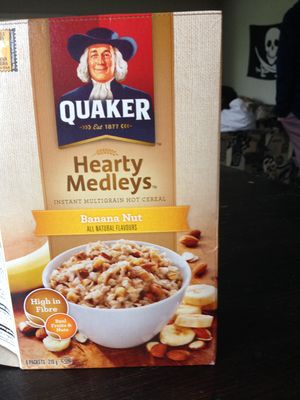 |
I eat instant oatmeal nearly every morning. I've been told that oatmeal is healthy, and it is easy to change the flavor by adding different things to it. | 1. How do the oats absorb the water? 2.Is oatmeal god for building muscle? 3.How do the manufacturers give the oatmeal different flavors? 4. Is oatmeal in packets worse for you than the oatmeal that you have to prepare yourself? 5. Is it better to cook it with milk or water? |
| MeganBarnett | http://wiki.ubc.ca/File:Mayo_001.jpg | I've been putting mayonnaise on my food for as along as I can remember. Hot dogs, hamburgers, french fries; all the good stuff, right?. Now that I've taken classes on nutrition I'm wondering if I should still be eating it. I'm also wondering how exactly it's made and what processes are used. | 1. How can you make a "light" version with half the fat? 2. How can you reduce the saturated and trans fats? 3. Is it relatively healthy to eat? 4. What gives it the white colour? 5. What processes are used to create this product?
Answers to these questions: 1. From lesson 4, we know that in order for a product to be labeled "light" it needs to have a reduced fat and Calorie content expressed in grams per serving size compared to that of the original product. 2. Fat is an important ingredient in mayonnaise since it is a emulsifying agent (lesson 2). To reduce the amount of saturated or trans fats in a product one could use a fat substitute (lesson 3) in order to keep the taste consistent but reduce the Calories or fat content. 3. Since this course is not about the nutritional side of food, this question can't be answered from the lessons. Although, based on my knowledge from this course and others, I would say that the light version of mayonnaise could be healthier since there is less fat and Calories. This would depend, however, on if they had to add anything else to the product in order to give it the same taste. These things being added may not be good for you, though, so it could make the light version worse for you. It truly depends on the person. 4. As we learned in lesson 2, colour pigments are naturally present in a lot of food. They can change when exposed to different factors such as pH, temperature and storage time. I do not know exactly what gives mayonnaise its white colour, but I can speculate it's white because of the ingredients which do not have any significant colour pigments in them. 5. There are most likely many processes involved in the making of mayonnaise which include the use of many preservation methods. For example, low temperature storage (lesson 7) to keep the mayonnaise good for a longer period of time is definitely important. Certain ingredients of the food itself also contribute to the longer storage life of the product. This would be the acid (lesson 9), sorbic acid or the acid in lemon juice, and possibly salt as well. Dehydration (lesson 8) is most likely involved in the processing too since egg and modified starch (corn, potato) are on the ingredient list for this product. |
| Angela Brand | 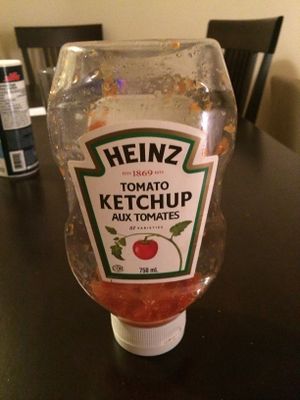 |
I have loved ketchup since I was very young and still use way too much of it! |
1. Why is Heinz better than any other kindzs? It probably has more sugar than other varieties and also has years of product development to perfect the recipe. Or it could just be the marketing! 2. Is there more sugar in ketchup than in pop? No. One can of pop has 41g of sugar and 1tbs of ketchup has 4g of sugar so you would have to eat 10 tablespoons of ketchup to equal a pop. 3. What is the purpose of sugar in ketchup? The sugar in ketchup is good for flavor, as sugar generally can be used to cut the acidity in a tomato dish without inhibiting the taste or outshining the tomato. Also, the sugar is used as a preservative. 4. Does the red colour only come from the tomatoes or is there food colouring? The colour of ketchup is due to the primary ingredients, tomatoes. 5. How do they make other coloured ketchup? "Making ketchup in outrageous colors required some re-engineering of the actual ketchup product. The vibrant color hues of EZ Squirt's Blastin' Green, Funky Purple, Stellar Blue, Passion Pink, Awesome Orange, and Totally Teal were achieved by stripping the red color from traditional Heinz ketchup and adding food coloring. And because the flavor had to be tweaked to taste just like traditional ketchup, it could no longer be called 'tomato ketchup' like the original red." http://www.fastcompany.com/1779591/what-were-they-thinking-day-ketchup-crossed-line-perfect-purple |
| dbond | 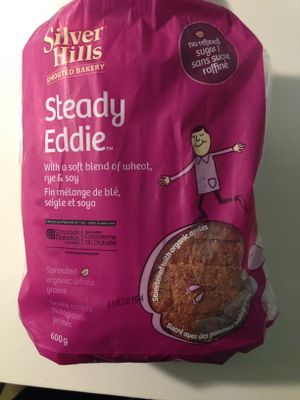 |
I love bread and couldn't imagine not being able to eat it everyday! I personally really enjoy the sprouted breads by Silver Hills as I find them much more filling than regular whole wheat brands. |
1. Why does it appear that more and more people are developing gluten intolerances? This was not covered in class, but I do know that traditional wheat used in bread is now commonly being replaced with genetically modified (GMO) wheat (Lesson 09). GMO have a foreign piece of DNA inserted into their DNA, which possibly when consumed could be detected as a foreign substance that the body does not recognize and as a result reacts to in a negative way. More information about this topic could be possibly be found in the article “Celiac Disease: On the Rise” published in the Mayo Clinic’s Online Research Magazine (http://www.mayo.edu/research/discoverys-edge/celiac-disease-rise). 2. Are the common health concerns about soy (one of the ingredients used in this brand of bread) justified? This was not covered in class either, but soy was mentioned in FNH 200 that it is a common allergen. I do know that soybeans contain phytoestrogens, which are similar to the naturally occurring hormone estrogen. Phytoestrogens are supposed to offer many health benefits. I could find out more about this topic under the Better Health Channel produced by the State Government of Victoria at: http://www.betterhealth.vic.gov.au/bhcv2/bhcarticles.nsf/pages/Soybeans 3. How is this particular brand of bread made using sprouted grains? This was not exactly covered in FNH 200, but sprouted grains are used in the same way that regular flour would be used with the exception that the grain has been sprouted. With regards to nutritive value, Lesson 11 does review the effects of processing on the nutritional value of food, which I believe sprouted grains would have a different effect on the nutritive properties of bread compared to the more standard milled grain. As stated in Lesson 11, processing method is one factor that does directly impact the degree of nutrient loss. I expect that using sprouted grains as opposed to milled flour would increase the nutritive value of bread, as a sprouted grain tends to have a higher nutrient composition than ground flour. More information on this question could possibly be found under the article “Sprouted grains for a healthier breakfast?” published by the University of Victoria (http://www.vu.edu.au/news-events/news/sprouted-grains-for-a-healthier-breakfast). 4. What type of grains make the healthiest bread? Again, this was not covered in FNH 200. From prior knowledge though, whole-grains as compared to refined wheat flour make for healthier bread, as they contain more fiber and higher amounts of nutrients. However, I am still unsure which grains are healthier than others, i.e. wheat versus rye, etc. Perhaps, I could find more information on this topic under the Whole Grains Council website at: http://wholegrainscouncil.org/whole-grains-101/health-studies-on-whole-grains. 5. What factors make whole-grain bread healthier than white bread? Again, this was not exactly covered in FNH 200. From prior knowledge though, whole-grains as compared to white flour is healthier, as whole-grains contain more fiber and higher amounts of nutrients. With regards to processing and nutritive loss as covered in Lesson 11, whole-grain bread is processed to a lesser degree than white bread, as both the bran and germ are left in the bread compared to being milled and removed to produce white flour. Both the bran and germ contain plenty of fiber, vitamins and minerals, which should result in a higher nutrient composition and better nutrient retention for whole-grain bread. Perhaps, I could find more information on this topic under the article “Whole grains: Hearty options for a healthy diet” published by the Mayo Clinic at: http://www.mayoclinic.org/healthy-living/nutrition-and-healthy-eating/in-depth/whole-grains/art-20047826. |
Your Real Family Name that Starts with C
Your Real Family Name that Starts with D
Your Real Family Name that Starts with E
| Your Wiki ID | Photo of a Food You Like to Explore | Why Did You Select This Food? | Questions You Have about This Food |
|---|---|---|---|
| GDhaliwal | 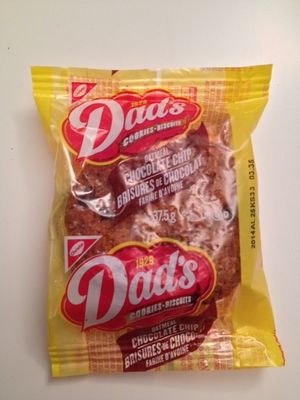 |
Cookies are one of my favorite foods to snack on, especially alongside a tall glass of milk. I am interested in learning about how processed cookies stay good for a number of months post manufacturing. |
Answers:
References: Health Canada. 2013. Food Additive Dictionary. Publication H49-10/1996E. Ottawa: Health Canada. http://www.hc-sc.gc.ca/fn-an/pubs/securit/2012-allergen_sulphites-sulfites/index-eng.php |
| Nicole del Aguila | 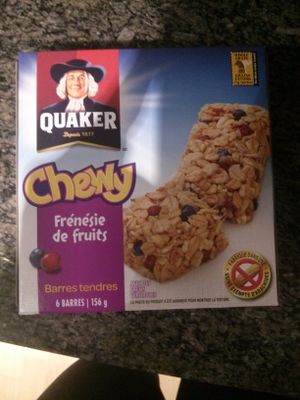 |
Granola Bars are quick and easy to eat in the mornings when I am in a rush to get to class. |
|
| Jia Hui Deng | 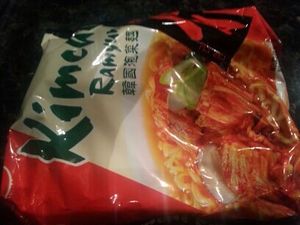 |
I love Korean food,for example kimichi tofu soup and kimichi pork, so I enjoy this kimichi flavor of instant noodle a lot. |
Answer: 1. When I read its ingredient list, I found tocopherols and citric acid, which are under list of permitted preservatives by Health Canada. In the ingredient list, it states " tocopherols as antioxidants." From lesson 5, we learnt that antioxidants added to the food could delay or prevent oxidative rancidity. Also, we learnt that we could prevent or delay enzymatic activity by controlling the acid condition in the food. The example we learnt from class was that citric acid was added to apple slices in order to create an acidic condition in the food. 2. We do not talk about what chemicals contribute to the kimchi flavor in class. But we learnt how to dehydrate the vegetables flakes and flavor powders for instant noodles. (Lesson 8) I guess that vegetables flakes and flavor powers are dehydrated by spray drying process, that evaporates from these ingredients without losing their flavors. I guess that we do not put chemicals that is specific for kimchi flavor to the food. 3. Sodium is mainly from salt in the instant noodle. I guess that sodium in this noodle plays a major role of contributing to the flavor. I guess that it may contribute to the dehydration effect for this dry noodle. From lesson 5, we learnt that a large quantity of salt was added to fish or meat for preservation. From lesson 2, we learnt that salt is a water binding agent, which lowers the rate of free water activity in food and inhibits microbial growth. 4. From lesson 8, we learnt a couple of factors that affects dehydration rate. These factors also affect to the rehydration rate. For example, increased surface area accelerates water reabsorption. I guess that the thinness of instant noodles increases the surface area for water reabsorption. Also, cooking method also affects the rehydration rate, such as water pressure and water temperature. 5. We know that this noodle contains a large quantity of salt and that it contains a lot of fat and carbohydrates. Therefore, eating instant noodles frequently will pose health concerns, such as obesity, heart disease, cardiovascular disease. |
| Brad de Hart | 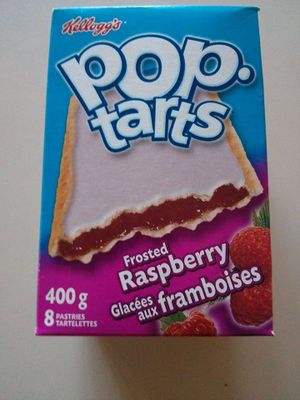 |
It is well known that pop-tarts are the breakfast of champions. While I haven't had one in awhile, these we're a mainstay of mine back in the good old days. They can be eaten toasted or raw, making them perfect for when you are 20 minutes late for class, yet you don't want to skip breakfast. |
Answers:
|
| Your Wiki ID | Photo of a Food You Like to Explore | Why Did You Select This Food? | Questions You Have about This Food |
|---|---|---|---|
| Brock Euper | 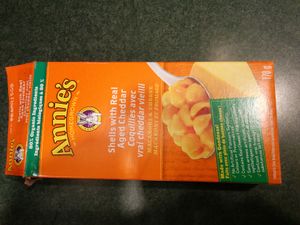 |
Annie's Organic & Natural Mac and Cheese is something my family eats for quick meals. I had it for lunch today. |
1.How do they make powdered cheese? From FNH200 I learned the basics of food preservation, which included the process of dehydration. One method I think that would create stable powdered cheese is the process of spray drying. That is why the cooking instructions say to add milk, which rehydrates the cheese.Lesson#8 2. What makes it natural or organic? I originally thought that FNH200 would discuss things more about nutrition and what to eat than food science, so unfortunately we did not cover the material related to what makes a product natural or organic. I assume that the Canadian government has some form of regulations listed on the Department of Justice website that regulates which products are organic and which products are natural. I would assume in order for a product to be labeled as such it must have no preservatives or pesticides used to grow the wheat and no antibiotics and organic feed for the cows that produced the milk for the creation of the cheese. 3. Is the color of the cheese natural? I learned in lesson in the production of cheese that in Canada, annatto and ß-carotene are permitted for use as colourants for Cheddar cheese (Division 8 and Table III of Division 16 in the Food and Drugs Act of Canada http://laws.justice.gc.ca./en/F-27/C.R.C.-c.870/index.html. So the color of cheddar actually comes form these colourants.Lesson #9 4. What preservatives are used to make it last so long? I learned that dehydration methods were used to dry the pasta and increase its shelf life. I also learned how spray drying was used to preserve the cheese. The packaging around the powdered cheese also helps preserve it as well as the cardboard around the pasta protecting it from light and getting crushed. Looking at the ingredient list, SODIUM PHOSPHATE, which is used as a preservative by lowering the water activity of food making it harder for microorganisms to grow and the availability for water for enzyme reactions. Lessons #2 and #8 5. What is so special about the bag that contains the cheese powder? Dehydrated foods, because of their low water activity, are hygroscopic (readily pick up moisture). The primary requirement that must be met by packaging material used with dehydrated foods is that there must be no transmission of water vapour from the surrounding environment into the food. Packaging should also protect against oxygen and light. Lesson #8 |
Your Real Family Name that Starts with F
| Your Wiki ID | Photo of a Food You Like to Explore | Why Did You Select This Food? | Questions You Have about This Food |
|---|---|---|---|
| Mnyfeng | 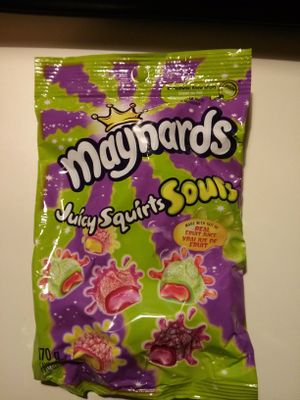 |
This candy is eaten among the classmates of my program year during lectures and study sessions. It is easy to share and tastes good. I am curious in the manufacturing process of this candy. |
Answers
|
| MikaylaFrancis | 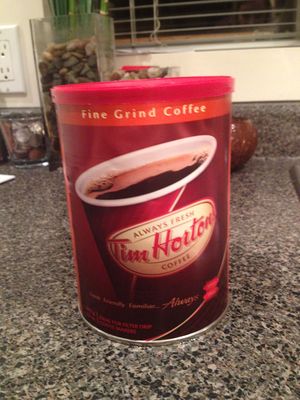 |
I love coffee and enjoy it every morning. It wakes me up and tastes great! |
1. What is the purpose of roasting the coffee beans? The purpose of roasting coffee beans is to enhance the aroma and flavour via the Maillard browning reaction. The beans are heated to induce the Maillard browning reaction, which involves reducing sugars reacting with nitrogenous compounds, resulting in brown pigments being formed (Lesson 2). These pigments are what cause the coffee beans to appear brown in colour, when they were previously green. During this process, low molecular weight intermediates are formed which contribute to both the flavour and colour characteristic of coffee (Lesson2). 2. What is the shelf life of packaged coffee grounds? Coffee grounds would be considered a shelf-stable food because they have a shelf life greater than 6 months (unopened). Once opened, it can be stored in the fridge or freezer in order to maintain its freshness over time, and inhibit mesophillic and thermophillic bacteria (Lesson 5). 3. Is it possible for it to be fortified with nutrients? It may be possible to fortify it with water soluble nutrients that would drain into a cup of coffee when brewed. However, it is not likely that a coffee company would do this because coffee is exempt from being required to provide a nutrition facts table, because it contains few nutrients (Lesson 4). 4. How is decaffeinated coffee produced? Decaffeinated coffee is produced through biotechnology and would be considered a novel food, according to Health Canada, since it is produced from a process not previously used for food (Lesson 9). Although we did not cover the specific process in FNH 200, I learned about this in a first year chemistry class. The Caffeine is extracted using CO2 under high heat and pressure. To learn more about this, I would ask a chemistry professor, food scientist, or search on Health Canada's website to find any regulations regarding decaffeinated products.
|
Your Real Family Name that Starts with G
| Your Wiki ID | Photo of a Food You Like to Explore | Why Did You Select This Food? | Questions You Have about This Food |
|---|---|---|---|
| MGraebel | 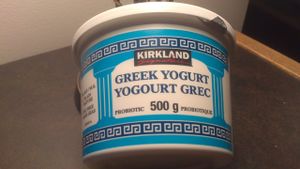 |
This food is a large part of my diet. I always hear Greek yogurt is a more healthy option than regular yogurt and I am curious to know if that is true |
1. What makes Greek yogurt different from other types? Answer: Both Greek and regular yogurts start out with the same ingredient - milk and bacterial cultures (Streptococcus thermophilus and Lactobacillus bulgaricus). However, in comparison to regular yogurt, Greek Yogurt is:
2. How is it made? Answer: More research is needed to answer this question specifically, however, I can speculate that fermentation is involved considering the main ingredient of this product is 'Bacterial Cultures'. These bacterial cultures, much like in cheese making (lesson 9), are used to break down lactose (milk sugar) from the other starting ingredient, milk. This product uses skim milk. Likely, lactic acid bacteria are present in the culture and will break down lactose to produce lactic acid. After fermentation, the solid yogurt will be strained from the liquid whey. Some form of preservation is also necessary in order to kill any disease-causing and spoilage-causing microorganisms. A popular method used in dairy products is through pasteurization of the milk (lesson 6). The milk used in the yogurt will follow a 12D margin of safety because of its low-acid content. The lactic acid by-product of fermentation will also play a role in preservation by increasing the acidity of the product -- most microbial growth cannot be supported in environments below a ph of 4.6. (lesson 2) 3. What makes the differences in %'s? Answer: The percentages (0%, 1%, 2%) are in reference to the fat content of the product. The standards of identity for each % are specifically defined by the Health Products & Food Branch of Health Canada and must be met in order to be sold and advertised under the % claimed. The Canadian Food Inspection Agency (CFIA) is then responsible for making sure the product meets these standards and abides to proper labelling regulations. (Lesson 4) 4. Can it be lactose-free? Answer: It is possible to have Greek yogurt that is lactose-free if it is fortified with lactase. Lactase is the enzyme responsible for breaking down lactose (milk sugar) and is not present in individuals with lactose intolerance. Greek yogurt is considered to have the lowest amount of lactose since most of the lactose is lost when the whey is strained. The lactic acid producing bacteria will also contribute to the breakdown of lactose. 5. How do the bacterial cultures grow/ how are they added? Answer: The bacterial cultures are added in as live starter cultures that can be unique to each type and brand of yoghurt. The starter culture, upon addition to the other starting ingredients in the food product, begins to grow under the favourable conditions that are set by the food processor. When desirable products are produced through the metabolism of the microbial cultures, this process is called fermentation. (Lesson 9) |
| JGillen | 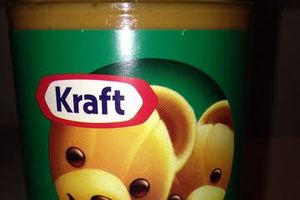 |
I love peanut butter! I eat it on apples, bananas, celery, and in baking. I am interested in learning the difference between the processing of Kraft peanut butter compared to natural organic peanut butter. |
1. What does Kraft put in their peanut butter to preserve it? Rancidity, due to spoilage in peanut butter often arises due to unsaturated fats and their susceptibility to oxidation. In order to reduce this undesirable effect, processing companies add hydrogen atoms to the vegetable oil in order to fill the available double bonds, creating a greater amount of saturated fats. The addition of hydrogen molecules contributes to the stability of the product as well as extends the shelf life (Team04 PeanutButter). As mentioned in the lecture on Lesson 5, additives such as salt and sugar are added to products to reduce free water molecules, causing binding to occur in order to delay the onset of spoilage. Peanut butter has both of these substances added as another preservation technique (Team04 PeanutButter). 2. How come the oil does not separate to the top of the jar like it does in other butters such as almond? To prevent the separation of naturals oils to the top of the jar, hydrogenated oils are added to the peanut butter to act as an emulsifier (Team04 PeanutButter). 3. Does peanut butter contain a lot of trans fat? Peanut butter labels state 0g of trans fat, however this is not the case. In order for a production company to make this declaration, the peanut butter must have 0.4g of trans fat or less per serving (Team04 PeanutButter). There is not enough trans fat in peanut butter to cause detriments to the health of an individual if it is eaten in moderation (Team04 PeanutButter). 4. What is in Kraft peanut butter that preserves it longer than organic peanut butter? Natural peanut butter is non-hydrogenated. This means it does not contain any hydrogenated vegetable oil. Kraft peanut butter is hydrogenated which means it contains vegetable oil with additional hydrogen molecules. By doing so, these additional double bonds increase the shelf life of the product and create a more solid texture(Team04 PeanutButter). 5. What kind of peanut butter is the healthiest to buy? PB2, a new peanut butter product made by pressing roasted peanuts into a powder. PB2 is a healthier product to buy as it has become popular for its reduced fat content and lower calorie content in comparison to regular peanut butter (Team04 PeanutButter). |
| Kayla Graham | 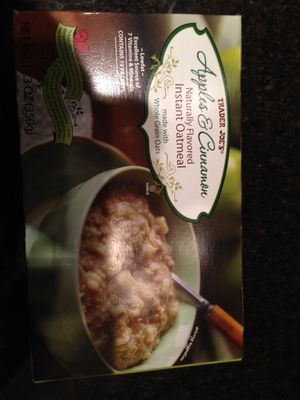 |
I chose instant oatmeal because I eat it every morning and I really enjoy and look forward to eating my packet everyday. | Most of the questions I asked in assignment 1 were not answered through this course so I had to do my own research to be able to answer the questions. Through my research I was able to answer all of my questions and it really gave me a better understanding of the my breakfast every morning.
1. What makes the oats instant? They are rolled oats that have been partially pre-cooked so that they are truly instant. This is because rolled oats are the fastest cooking oats that are available and they are easy to partially cook and then re-cook so that they become instant. (Stockton) 2. What is the difference between regular oats and steel cut oats? Steal cut oats are oats made from whole oat grouts that have been chopped into thirds and are almost exclusively used for breakfast cereals. Where as the regular oats that we see are usually rolled oats. Rolled oats are made from steamed oat groat that has been rolled to flatten them. There are different kinds of rolled oats and that is based on the thickness of the rolled oat. (Stockton) 3. Why are the oats and the flavouring able to last so long? Dehydration processing of the flavoring and inclusions within instant oatmeal makes the flavouring last so long in the oatmeal packages as dehydrated and dried foods have extremely long shelf lives if they are packaged and stored properly so that no moisture can get in and rehydrate those components. (Lesson 8) 4. Is there a difference between whole grain oats and regular oats? There is no difference between whole grain oats and regular oats as all oats are made from whole oat groats but they just differ in the way in which they are processed. (Whole Grain Oat Council) 5. Does instant oatmeal suffer in nutritional value due to the fact that it is instant? Does instant oatmeal suffer in nutritional value due to the fact that it is instant? There is nutritionally no draw back on choosing instant oatmeal other than the flavouring included in them, as they tend to add more sugar when choosing flavours so that they are sweeter for the consumer. In the case of just the oats there is no nutritional difference as they are all whole grain oats that have just been processed differently. (Whole Grain Oat Council) References: Stockton, Cassidy. "Steel Cut, Rolled, Instant, Scottish? | Bob's Red Mill Blog." Bobs Red Mill Blog Steel Cut Rolled Instant Scottish Comments. N.p., n.d. Web. 16 Apr. 2014. <http://blog.bobsredmill.com/featured-articles/steel-cut-rolled-instant-scottish/>. "Types of Oats." The Whole Grains Council. N.p., n.d. Web. 15 Apr. 2014. <http://wholegrainscouncil.org/whole-grains-101/types-of-oats>. |
| Gan |  |
I chose milk because I always have a pint in my refrigerator and I used to be obsessed about drinking milk! If I was ever hungry I would drink a glass of milk and it kept me full for a good period of time before I had an actual meal. I would usually consume it for breakfast and along side my dinner. | 1. Are there different ways milk is stored when shipped?
2. Does milk directly from cows taste the same as the ones you find in stores? 3. Is there a difference between powdered milk and liquid milk? 4. Why does milk turn sour when expired? 5. How is milk pasteurized? |
| Rainier | 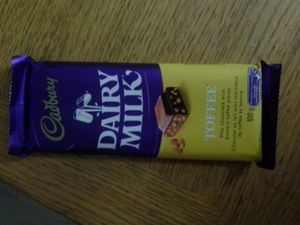 |
I chose chocolate bar because I like sweet foods especially during exams. I never ran out of chocolate bars since I always buy these whenever possible. |
Questions: 2) What is the difference between milk, white and dark chocolate? 3) Does it have a natural long shelf life or preservatives were added to contribute to this characteristic? 4) How do you choose the appropriate additives/preservatives so as not to affect the taste and quality of the chocolate bar? 5) Is it true that dark chocolate is the healthiest type of chocolate? Answers:
|
| Yu Ting Gao | 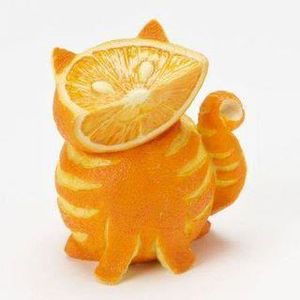 |
I found it in my computer so I chose it. xD |
Q.
A. We didn't talk about any of the questions I have, so I'm not able to answer them and I'll look them up online.
|
Your Real Family Name that Starts with H
| Your Wiki ID | Photo of a Food You Like to Explore | Why Did You Select This Food? | Questions You Have about This Food |
|---|---|---|---|
| Jianu Huang | 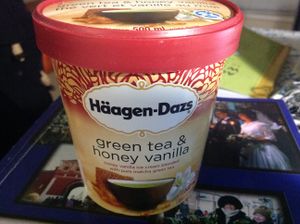 |
I love the flavor of green tea ice cream. It is sweet but not that much | 1. How to make ice cream? 2. How to keep the balance between the 3 flavors (Green tea, honey and vanilla) of it? 3. Did the makers really add green tea and honey vanilla? 4.There is a mark on the top "100% Canadian Milk". Why they add it? 5. I saw a date on the bottom. Is it expiry date or best-before date? Answers: |
| Tanjib Hasan | (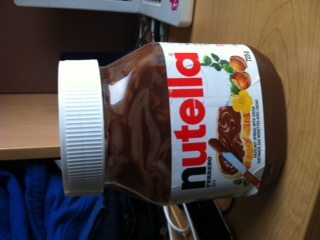 ) ) |
As lazy as I am when it comes to making food, Nutella comes very handy in laying on top of my toast for breakfast and having to eat it with salted crackers as a snack. Having a spoon of Nutella is great as well as the taste is just too good! | 1. How can Nutella last very long after opening the lid? 2. How is it so spreadable and doesn't drip apart? 3. How exactly is the Nutella chocolate made? 4. Where does the 4% Iron/Fer come from? 5. Is it better to leave it outside or should I rather leave it in the fridge?
1. Nutella has a very high sugar content which helps extend its shelf life. The sugar molecules are known to decrease the rate of water activity, directly preventing any further bacteria, since it is less likely for bacteria to grow at low water content/water activity. The container is another essential factor to why Nutella last long. This container is made so that when closing the lid, oxygen is completely shut out from the Nutella inside the container which also prevents from the products going bad and bacteria/moulds growing. (Lesson 4/5) 2. Nutella consists of fat as well, and the spreadable feeling is very similar to those of butter and margarin. Nutella also consists of emulsifiers such as soy lectin and whey protein which is used to firm up the spread and keep the ingredients from separating. (Lesson 2) 3. It is difficult to answer how exactly Nutella is made, otherwise this product would not be one of a kind and then would not sell. However from its website I determined that over 50 hazelnuts per 13 oz jar is used, contains no artificial colors and no artificial preservatives. Other ingredients include sugar, palm oil, cocoa, skim milk, reduced minerals whey, soy lecithin, and vanillin, which is an artificial flavor. (from Nutella website) 4. I do not know where exactly fer/iron comes from, however huge intake of it is detrimental for your body. Once taken, it becomes part of your hemoglobin and myglobin. Hemoglobin carries oxygen through your blood to tissues and organs. Myoglobin helps your muscle cells store oxygen. (http://www.drugs.com/mtm/fer-iron.html) 5. The Nutella container suggests that we should leave it out in room temperature to retain spreadability, the lid completely close of course. If you leave it in the fridge, the fat/oil content in Nutella will freeze thus making it difficult to spread once you try to use it after taking it out of the fridge. Must refrain from exposure of heat, otherwise the fat/oil content in the Nutella will spill. http://www.eatbydate.com/other/condiments/how-long-does-nutella-last-shelf-life/ |
| Tsuyoshi Hamanaka | 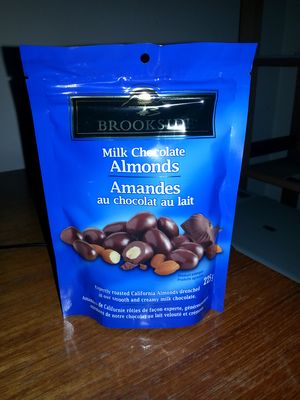 |
This is the almond chocolate I always eat when I am studying or doing my homework. Especially because I am lazy to cook, this chocolate saved me a lot. | 1. How can this product last so long even after the expiry date. 2. Why is the expiry date so far away? (I bought this one in December, expires in November 2014) 3. I am allergic to almond, but why don't I get a reaction from this. 4. Did this chocolate go through some special process in order to maintain this circular shape? 5. How can this chocolate made with almond being in the middle? (Chocolate coated perfectly even). |
| Yin Ling Ho | 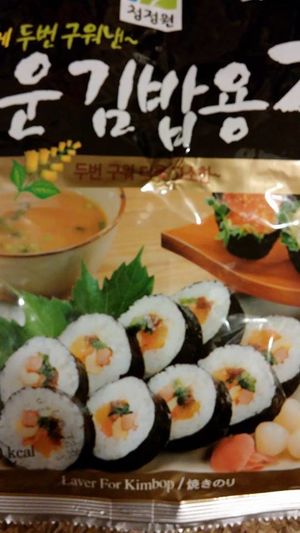 |
This is the seaweed that my always use when she makes her sushi dishes and it always reminds me of her when I make sushi with this seaweed | 1. What kind of methods do they use to preserve this seaweed. 2. How do the food processor determine when the expiry date is for this food? 3. How do they ensure the consistency for all their products of seaweed. how do they keep the texture, colour and the thickness of the seaweed the same? 4. Why do they use this type of packaging if the seaweed sometimes becomes stale before the expiry date? 5. The ingredient list consist only of seaweed is this possible? |
Your Real Family Name that Starts with J
| Your Wiki ID | Photo of a Food You Like to Explore | Why Did You Select This Food? | Questions You Have about This Food |
|---|---|---|---|
| ijajalo | 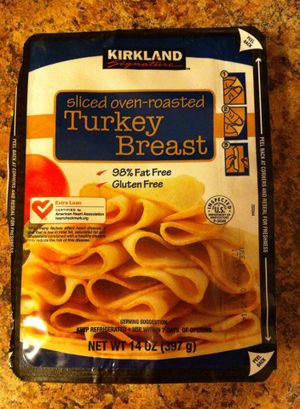 |
I make and eat sandwiches. I'm curious about what actually goes into making the products I use in my sandwiches. |
1. I think the packaging method used for this product is modified atmospheric pressure packaging or vacuum packaging. That involves changing the content of the gas in the food container to the composition that would be ideal for extending shelf life (Lesson 07). Once the product is opened, this gas composition is released and normal atmospheric pressure enters the container of food. Under these conditions, microbes will be more likely to grow and the product will be more likely to spoil. Most likely, the 7 day recommendation is what the manufacturer (and the regulations) consider a safe amount of time for the product to be exposed to natural atmospheric conditions. 2. While we did cover the regulations of fat content (assignment 2), we didn't really cover the process of changing the fat content of a food product. I think changing the fat content of turkey slices just depends on how much fat is added to the product in the manufacturing process. Turkey meat starts off rather lean. I think the production involves grinding up several pieces of turkey together and the manufacturer regulates the fat content by adding different amounts of fat at this step. For this product, if the manufacturer had 98 lbs of lean turkey meat, they would add 2 lbs of fat (ie/ skin, lard, oil). I may be able to find more information on the process in: "Meat Science and Applications" By Hui, YH. 2001 Chapter 18. 3. I think the liquid is most likely a salt solution. Most likely it adds flavour to the meat as well as reduces the growth of microorganisms on the food product. In lesson 06, it was mentioned that salt has the ability to bind to water and thus limit the amount of water that is available for microorganisms. This will inhibit their growth. Salt also has the capabilities to dehydrate microorganisms if used in high amounts (lesson 06). 4. Most like the cooking process is similar to the process I would use at home but on a much larger scale and with much more controlled conditions. To elaborate, I think a very large "oven" would be used to cook multiple pieces of meat at once. I think the temperature and time used would be not only ideal to cook the product, but to also ensure the growth of microbes is minimized. Furthermore, I think the cooking process requires all of the pieces of meat to be of the same size so that the same cooking conditions would be ideal for all of the pieces of meat. I may be able to find more information on the cooking process in these books: "Meat Science and Applications" By Hui, YH. 2001 and "Poultry Meat Processing" By Sams, Alan R. 2000. Furthermore, this "How it's Made" video on poultry deli meat slices fully answered my question: http://www.youtube.com/watch?v=MAbt5lNwx3c 5. Freezing generally extends the shelf life of a product. It causes the water present in the food to be frozen into ice. This means there will be less active water in the product. As you further lower the temperature, there will be less and less water that bacteria can utilize. With the reduced content of available active water, the rate of microbial growth would be reduced. It should be noted that low temperatures do not necessarily kill microbes; they simply prevent their growth. This information can be found in lessons 05 and 07. |
| ToddJury | 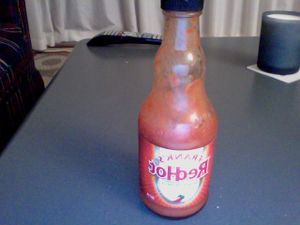 |
I put hot sauce on almost everything. My parents and sister put hot sauce on almost everything. I am wondering if all this hot sauce can be harmful. |
|
| tjiang |
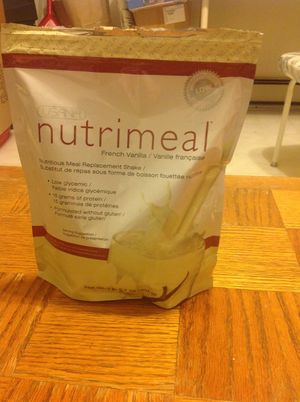 |
I love meal replacement shakes. Gives me quick energy in a morning when I don't have time to cook breakfast! |
|
| ShelbyJenkins |
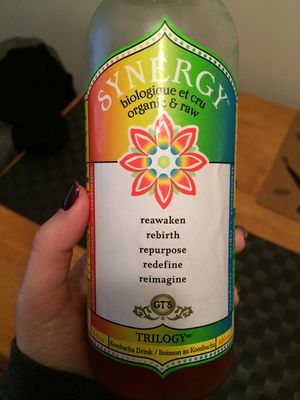 |
This is one of my favorite drinks. As I don't drink juice or pop, it's a nice alternative without so much sugar. I love how fizzy it is and the different flavors available. |
1. Is there any scientific evidence of its health claims?
2. How long after opening is it safe to consume?
3. After a few days of being open it loses fizz, does this have an impact on the supposed health benefits (ie. is it an indication of a change in the bacterial cultures)?
4. Does the fermentation process stop when the kombucha is bottled?
5. If the fermentation stops when bottled, why is this?
|
Your Real Family Name that Starts with K
Your Real Family Name that Starts with L
Your Real Family Name that Starts with M
| Your Wiki ID | Photo of a Food You Like to Explore | Why Did You Select This Food? | Questions You Have about This Food |
|---|---|---|---|
| McCoyMa | 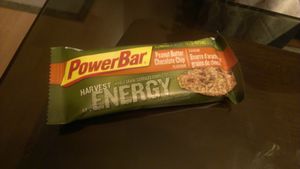 |
I enjoy PowerBars when I am about to play moderately intense sports - ball hockey, snowboarding and baseball, to keep me going and to help replenish lost nutrients and calories and compliment my increased intake of water and other sports drinks. It's easy to pack into my bag and seems healthier than other options. | 1. Does the nutritional value change when the PowerBar is not consumed with water or other fluids (as recommended by the company)?
2. The packaging is definitely different from your standard granola bar. How did they decide this was the best version for this specific bar? Did the flavour of the bar have any effect on this decision?
3. What level or amount of calories changes the bar's classification from simply a "nutritional supplement" to a full "meal replacement", ie. Vector cereals and bars?
4. Would the energy bar production differ if they used a different type of chocolate chips - white, dark, etc.?
5. They measure Vitamin A in RE. What does that signify?
|
| Michniii or AnetaMichniak | 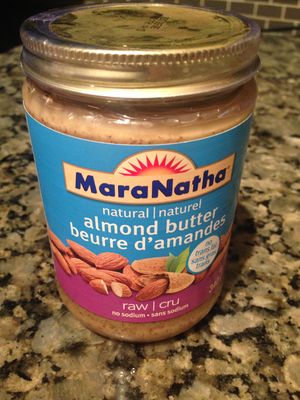 |
I enjoy Almond Butter with almost everything such as spreading it on bananas, apples, and toast. However, I mostly eat a spoonful of it and I'm satisfied! This is my ultimate go-to snack for whenever I am on the run. Since it is purely made out of almonds it fills me up quite easily. |
1. Why is almond butter better than peanut butter?
2. What does the manufacturer put in to preserve the almond butter (if any)?
3. How does it become so creamy when the raw nuts are processed?
4. How long after the expiration date could I consume almond butter?
5. Does it need to be refrigerated? Is it best to leave it at room temperature? Why?
|
| MattMuirhead | 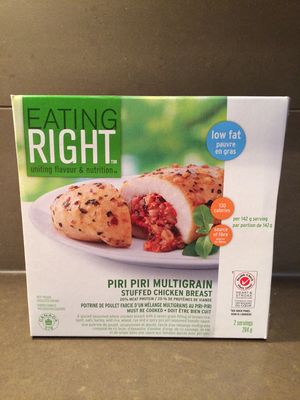 |
I chose this food because it's something that I cook often. It's an easy meal to make, and it's a good source of protein. There are many varieties of "stuffing" to choose from. I usually eat this chicken with pasta or on top of a salad. |
1. Does having the product stored in the freezer allow for the use of less preservatives? 2. What type of preservatives add the most calories? 3. How can you reduce the amount of preservatives in food without reducing the shelf life? 4. Do multigrain products expire earlier than non-multigrain products? 5. In order to advertise this product as a healthy food choice, are there any restrictions on the preservatives that go into it? |
| Bret Macdonald | 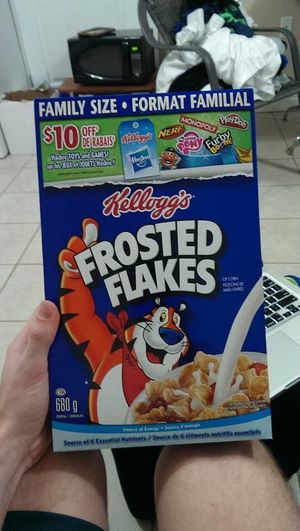 |
I chose Frosted Flakes because I constantly have it whether it’s for breakfast or even before bed. I love to snack on it due to the taste and I always have it stocked in my pantry at home. | 1. Are there any flavor enhancers? Yes there are. Certain additives are used in the production of Frosted Flakes to enhance the taste.
2. How much sugar is added to better the taste? I found there is about 25 grams of sugar per bowl of Frosted Flakes but I could not find how much sugar is added to enhance the flavour. 3. What are the main artificial substances? vitamin C (ascorbic acid and sodium ascorbate), niacinamide, vitamin B6 (pyridoxine hydrochloride), vitamin B2 (riboflavin), vitamin B1 (thiamin hydrochloride), vitamin A palmitate, folic acid, vitamin D, vitamin B12. 4. If no sugar were added, would it be considered a healthy cereal? No, because there are still certain additives in Frosted Flakes that make for an unhealthy breakfast item. 5. Is eating a bowl of Frosted Flakes equivalent to eating a bag of candy sugar wise? No, the amount of sugar in candy is far greater than Frosted Flakes, 1 piece of candy may have 5 grams of sugar and if you have 20 pieces of candy, which is highly likely, you would be having nearly 100 grams of sugar as opposed to Frosted Flakes where one bowl is 25 grams of sugar or so. |
Your Real Family Name that Starts with N
Your Real Family Name that Starts with O
| Your Wiki ID | Photo of a Food You Like to Explore | Why Did You Select This Food? | Questions You Have about This Food |
|---|---|---|---|
| Mai Okutani | 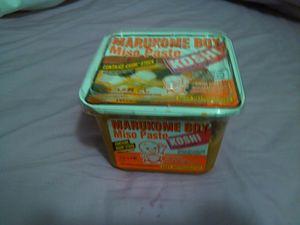 |
I use this miso paste when I am making miso soup. This miso paste contains Dashi(bonito fish stock) inside, which becomes the Umami in the miso soup. | 1.How does the dashi stock inserted in the miso paste?
2.It says "non genetically modified soybeans used, but is the genetically modified soybeans bad for our body? 3.In miso paste, there are smooth one and rough one but is there any nutrient difference between them? 4.What is the benefit of having miso ? 5.How the miso paste is being made? 1. Dashi stock inserted is in the miso paste by mixing Bonito Extract, Bonito Powder, Kelp extract. (According to ingredients on the label) 2. Health Canada concluded that genetically modified soybeans,Roundup Ready soybeans, “ are as safe as other commercially available soybean varieties, and are suitable for food use.” so it can be said that genetically modified soybeans are safe. 3. There was no significant difference between rough miso and smooth miso. However, there is miso that contains less salt and sodium is reduced to around 20%. 4. Through fermentation, miso is more nutritious than the unfermented original materials, and miso has higher levels of B-vitamins than soybeans. (Lesson 9) 5. Miso is manufactured by mixing soybeans, rice koji (moulds) and salt, and allowing them to ferment. Temperature is strictly monitored, and if the temperature was not high enough, koji will not play the agent role to change proteins to polypepties, peptides. Free amino acids, amines, which cause textual and flavor changes in foods (Lesson 9)
|
| Miguel Olfato | 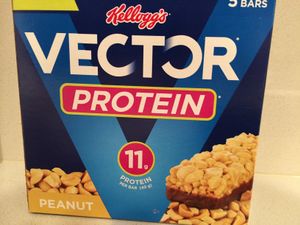 |
I chose this food because it is easily accessible and I can take it on the go. This helps fuel me for an active day. | 1. How many of these bars do you need to consume to satisfy your daily protein needs?
2. What additives are used in its production? 3. Would it be good to use for protein supplementation? 4. Can it be used as a meal replacement? 5. Is it actually good for muscle recovery? Answers 1. We did not discuss in detail daily requirements for protein. However, depending on fitness goals, and body size, you would need roughly 1.8-2.0 grams per kg of body weight. This means you would need around 5-10 bars to satisfy your daily needs. 2. Additives include natural and artificial flavours, soy lecithin, salt, dextrose based on http://www.kelloggs.ca/en_CA/vector-energy-bar-chocolate-chip.html 3. Relating to question 1, you could use it as protein supplementation, but it will not be the most efficient compared to whey protein powder, soy protein, etc. 4. It should not be used for meal replacement because you would need to eat so much of it as compared to having a well-balanced diet. 5. It would aid in muscle recovery, but should not be the main source of nutrition for that purpose. |
Your Real Family Name that Starts with P
Your Real Family Name that Starts with Q
Your Real Family Name that Starts with R
Your Real Family Name that Starts with S
| Your Wiki ID | Photo of a Food You Like to Explore | Why Did You Select This Food? | Questions You Have about This Food |
|---|---|---|---|
| CRuizLarrea | 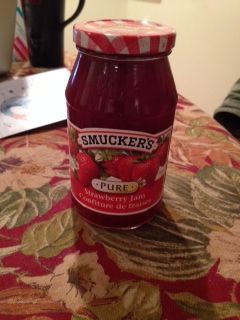 |
I really like jam, and I've been having it for breakfast for many years and I was wondering if it was good for you. | 1) Do they use actual strawberries or is it just artificial flavours?
2) What is the ratio of sugar to strawberries? 3) Does it contain many additives? 4) Is it good for you? 5) Is there a specific brand that is better for you? 1) Looking at the label. Look at the list of ingredients which is one of the food labelling requirements by CFIA (Lesson 4). They do use strawberries as the main ingredient because it is the first ingredient on the ingredient list. 2) This ratio depends on the manufacturer. Sugars produce a body and mouth feel (lesson 2) which may increase use of sugar in order to have a positive feel. And also sugar acts as a preservative by binding to water molecules (lesson 2) 3) According to the Food and drug regulation and the definition of food additives, there are no additives in the jam. (Lesson 4) http://laws-lois.justice.gc.ca/eng/regulations/C.R.C.%2C_c._870/page-160.html#docCont 4) This totally depends on what an individual considers good or bad. It is good because it does not contain a additives (lesson 4). Also, looking at the nutrition label, the first ingredient is strawberries therefore even though there is a large quantity of sugar in the jam (Lesson 2,4) 5) There may be a specific brand that is better or worse for you. Depends what an individual is looking for. Some brands have health claims (Lesson 4) therefore an individual may be interested in one or more of those health claims. |
| HayRoe | 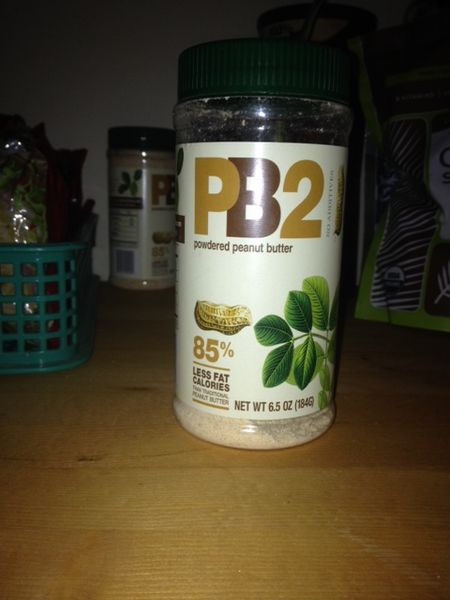 |
I selected this food because it is my most preferred form of peanut butter and seems to be, from personal beliefs, a healthier and lower fat alternative. I have also always been curious to learning more about this product. | 1. How do they press the peanuts? 2. How many peanuts would you need to create this product vs. a regular peanut butter. Is it efficient? Wasteful? 3. How is the fat expelled? 4. How is this product preserved? |
| Kristina Richmond |  |
I love kale chips. They are one of my favourite foods to eat as a snack. I'd like to know more about how they are made. | 1. How do they remain crispy for long periods of time?
2. What needs to happen during shipping and packaging in order for them to retain their shape without getting broken too much? 3. How does the dehydration process work? 4. How important is the packaging in maintaining the freshness of the kale chips? 5. What is the longest period of time these could last, and still be safe to eat? |
| ShraavanRaveendran | 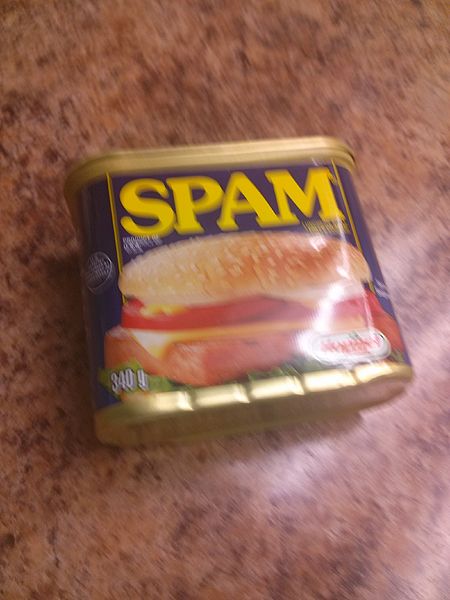 |
Unlike fresh meat from the grocery store I do not have to spend much time cooking it, since it is perfectly fine to eat uncooked. It has a long shelf life and it is my go to food to make at home, when I run out of other protein in the fridge. |
1. Why is there such a high sodium content? (33%) As we learnt in Lesson 5, in order to make this food shelf stable, a method that was employed was raising the salt content; Sodium acts as a preservative. This essentially lowers the water activity in the food, dehydrating microbial cells and prevents their growth. Sodium is added in two forms: Sodium Nitrate and Sodium Nitrite. Sodium Nitrate gives the SPAM the preservative properties listed above. Sodium Nitrite on the other hand is an additive used to give the meat the nice pink colour, otherwise it would look a lot less appetizing… 2. Which part of the pig do they use, and why is the protein content so low in that case? This is a question that does not pertain to this course but after some research I found out that they use pork shoulder, buttock and thigh (ham) that are all processed together. As for any fillers used in the product; the USDA does not allow pig snouts, lips or ears to be used so we do not need to be worried about eating any of that. 3. Why does this sort of meat not need refrigeration? Processing involves heat sterilized to ensure that the meat is cooked and all the bacteria and spores are killed. This is done in a hydrostatic cooker. Along with the addition of preservatives as mentioned above as well as being sealed in a closed environment impeding the growth of any microbes. After processing and sterilization, the cans are kept for 10 days in the processing plant to test for proper cooking and that there are no bacteria that survive (USDA policy). 4. What part of the meat processing allows it to have such a long shelf life? As mentioned above, it is the heat sterilization aspect that kills all the bacteria. 5. Why is potato starch added as one of the ingredients? As we learnt in Lesson 2, starch is an important ingredient in food. In SPAM it acts as a thickener and a gelling agent. Making the product nice and pliable, overall enhancing the textural aspect of the food. Interestingly enough, it is because of this ingredient that leftover SPAM left in the fridge is much harder the next day because of retrogradation (hardening and drying of meat). Sources: http://www.madehow.com/Volume-6/Spam.html http://www.livescience.com/32813-hormel-spam-no-mystery-meat.html |
| JieRen | 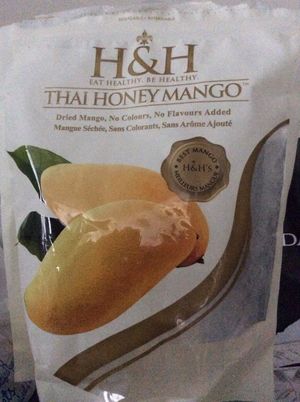 |
Mango is my favourite fruit of all times. Since carrying fresh mango around as a snack is difficult, these naturally flavoured dried mangoes become very convenient. |
1. Just how much sugar is added to keep them this sweet? 2. What do sulphites do? (Only other ingredient next to mangoes and sugar) 3. What keeps them fat free? 4. What makes them safe for consumption within a year? 5. What makes up the carbohydrates in them? (11% in 8 pieces) |
| Emily Reid | 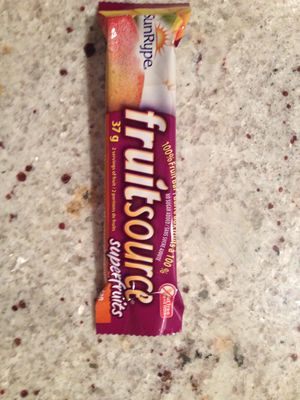 |
This is one of my favourite processed foods since there is some decent nutritional value to it, and it is convenient to eat whenever I am hungry. |
1. Can it be used as a replacement to regular fruit? 2. What does it mean if something is from concentrate? 3. What does "natural flavour" mean? 4. Is the best before date accurate, or is it safe to eat a few months after? 5. Is 29g of sugar a large amount to eat from such a small snack? 1. While this fruit snack does say it is equivalent to 2-3 servings of fruit, given the concentration processing of the food, there are differences to it that actually alter things like nutritional value. When food goes through processing it can lose nutrients. Lesson 5 taught me that factors such as light, oxygen, temperature, etc., could impact how much is lost. Therefore while there are still nutrients, it is not the same as eating regular fruit. 2. Concentration implies that some of the water is removed from the food in order to concentrate the food constituents. Concentrated food can be sweeter since there is less water in the product. Lesson two describes how the amount of water in a product can change the level of concentration. 3. Natural flavours mean the company has not chemically altered the food to make it taste a certain way. The taste comes directly from the ingredients used. The Canadian Food and Safety website would have more information on what the exact definitions may mean. 4. Based off of lesson 5, this fruit snack would be a semi-perishable food that lasts between 2 – 6 months. This means that some preservation methods have been used to keep the food from spoiling. Usually with a product like this it would be okay to eat a few weeks after the date, only if the packaging was in pristine condition as to avoid contaminants. Otherwise it may be safer to just throw it out. 5. There is no prescribed amount of sugar according to Canadian regulations but given the amount of hidden sugars I’ve learned about in lessons 4 I would assume it is on the high side. Lesson 4 taught us the importance of reading labels and the requirements that Canada has for revealing product information such as if any sugars were added.
|
| Katelyn Ross | 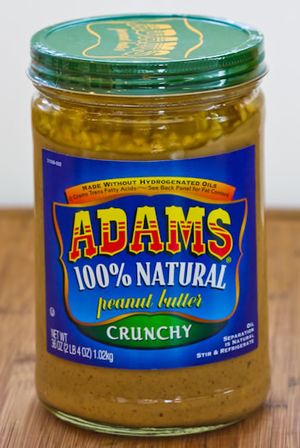 |
I eat natural peanut butter almost every day for breakfast. I like it because it's crunchy and it keeps me full until lunch. |
1. Is there any sugar added to it? Looking at the label, it is clear there is no sugar added to the peanut butter because in total there is only 1 gram of sugar. 2. Do they use real peanuts? Yes, they use real peanuts because they make the claim that it is 'natural'. 3. What do they add to make is so viscous? Nothing is actually done to the peanut butter to make it more viscous. The liquid part of the spread comes from the separation of the fat molecules (peanut oil) from the rest of the food substance at room temperature. By placing it in the fridge, the cooler temperature inhibits this separation from occurring and thus the peanut butter remains one constant consistency throughout. 4. Can all the products of it be broken down and digested in the body? Because it is a natural product and there are no additives, all components can be digested by the body. 5. Is it healthier than other, not "natural" peanut butters? Yes, the natural peanut butter is a healthier option because there is much less sugar in it. |
Your Real Family Name that Starts with T
Your Real Family Name that Starts with U
Your Real Family Name that Starts with V
Your Real Family Name that Starts with W
| Your Wiki ID | Photo of a Food You Like to Explore | Why Did You Select This Food? | Questions You Have about This Food |
|---|---|---|---|
| kkwong26 | 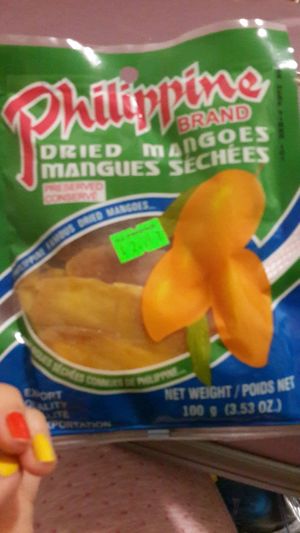 |
A light and sweet snack for studying as it appears to be more nutritional and has less calories than chips for example. | 1. Why is it so sweet? 2. How is it made? 3. Is it produced from fresh mango? 4.What is the procedure for converting a fresh mango into a dried fruit? 5. Why is it this shape?
1. According to Lesson 8, the product is very sweet due to the chemical changes that takes place during dehydration. Water migrates from the interior of the food to the surface where it finally evaporates and is carried away by the dehydrating medium, contributing to the poor rehydration properties. This causes the product to be less sweet because the sugars are concentrated on the outside of the fruit. 2. The dried mangoes are most likely produced from Tray (air) Drying. The water soluble components migrate to the surface of the food and are deposited as water evaporates (Lesson 8). 3. The dried mango is made from fresh mango but after dehydration, the fresh mango becomes shrunken and dense, turning into a dried fruit. (Lesson 8) 4. The procedure for converting a fresh mango into a dried fruit is through Tray (Air) Drying. The mango is placed on trays or racks and is exposed to heated air at a set velocity. This type of drying requires heated air with a relative humidity lower than that of the product ot be dried. Water soluble components migrates to the food surface and are deposited as the water evaporates (Lesson 8) 5. The dried mangoes are this shape because as the water is removed form food pieces during dehydration, the cells within the tissue shrink and lose their elasticity. Part of the reason for shrinkage of foods that have been dehydrated is that the water migrates from the interior of the food to the surface where it finally evaporates and is carried away by the dehydrating medium. As the water migrates to the surface of the food it carries with it the water soluble substances dissolved in it. The loss of these substances from the interior of the food pieces contributes to the shrinkage observed in dehydrated foods (Lesson 8). |
| MatthewWalden | 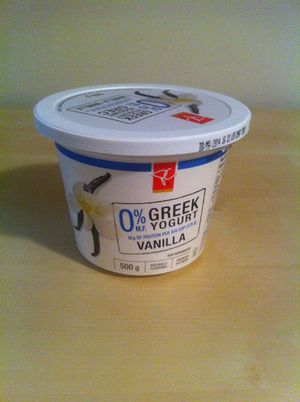 |
I love greek yogurt: it's a great snack. I would like to learn more about it. | 1. Why does greek yogurt have an expiry date and some other foods do not?
2. What is the function of pectin as one of the ingredients? 3. Greek yogurt contains 18 grams of protein: what is the recommended daily intake of protein for the average individual? What happens if you consume more then your recommended intake? 4. Does the sugar in greek yogurt play any particular role other than contributing to the flavour of the product? 5. How is greek yogurt packaged? 1. Foods with a storage life of 90 days or less require a durable life date: which is why greek yogurt has an expiry date and some other foods do not (foods that do not have a storage life of 90 days or less). Food products that have surpassed their durable life date and have been stored under prescribed conditions are still safe to eat although the quality of the product may have spoiled. (Lesson 04) 2. Pectin is a common polysaccharide seen on food ingredients lists. It is used in jams and jellies as gelling agents in the presence of adequate sugar and acid and it contributes to the mouth feel & maintenance of particles in suspension. (Lesson 02) 3. Adults require 0.8 grams of protein per kilogram of body weight. Protein that is ingested in excess is converted to energy or it is converted to fat for storage. (Lesson 02) 4. Sugars not only contribute to the flavours of food but are also used in foods for their water binding properties. Sugars in jams and jellies prevent growth of bacteria and yeasts (except for moulds which can grow in a state of low water activity). (Lesson 05) 5. Yogurt (food product processed with UHT) is packaged aseptically into pre-sterilized containers. These containers are usually made from laminated plastic or aluminum & paper, which are sterilized with hydrogen peroxide and heat. (Lesson 06) |
| EmWynker | 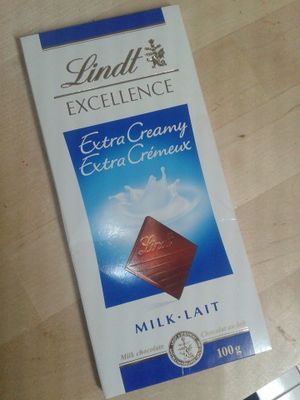 |
I really enjoy the creaminess of this brand of chocolate. I also find it really interesting how almost everyone enjoys chocolate, how chocolate is often given as a romantic gift, and how chocolate has evolved over the years. | 1. How are bitter tasting cocoa beans transformed into sweet, delicious chocolate?
2. How does processing differ for dark chocolate, milk chocolate, and baker's chocolate? 3. Is white chocolate produced in a similar way to dark and milk chocolate? 4. Why do some types of chocolate melt in your fingers, while others remain solid? 5. What are the Canadian regulations regarding the export and import of chocolate? Assignment #3 1. We did not cover the process of chocolate production in class, but a bit of research has revealed two important parts of cocoa processing. Cocoa beans undergo a fermentation process which turns them brown (Lesson 9). Cocoa beans are then dehydrated (Lesson 8) in the sun. The brown, dried cocoa beans are melted, and sugar and milk. When poured into molds and cooled, the mixture of melted cocoa beans, sugar, and milk forms sweet delicious chocolate. 2. The differences between these three chocolates were not covered in FNH. However, the fermentation, dehydration, and melting processes discussed in Q.1 do not differ for dark, milk, and baker's chocolate. The real difference is added sugar and milk. Variations in these ingredients alter the sensory properties of chocolate (Lesson 2) as well as its chemical makeup. Because milk and dark chocolate contains more milk ingredients than baker's chocolate, they may require a higher level of emulsifiers and stabilizers to maintain shape and consistency (Lesson 4). 3. The difference between white chocolate and other varieties of chocolate was not covered in FNH. White chocolate has a much less savoury, rich taste than darker chocolate. Also, it tends to be very creamy in colour. As learnt in Lesson 4, carrier and extraction solvents are used to decaffienate products. This may occur in white chocolate, which is typically lower in caffeine than dark and milk chocolate. According to the FDA Standards of Identity, white chocolate contains the same ingredients as dark and milk chocolate, but does not contain solid cocoa (i.e. cocoa powder). However, many differences exist between food labelling regulations and standards of identity between Canada and the USA (Lesson 4). 4. The melting of chocolate has to do with stability at given temperatures. The emulsifier Lecithin is used to stabilize chocolate (Lesson 4). In Canada, lecithin is considered a food additive. Emulsifiers stabilize emulsions by preventing the coalescence of different phases (Lesson 2). In this case, emulsifiers prevent the coalescence of solid cocoa particles and carbohydrates with melted chocolate liquor and and milk. 5. Again, we did not specifically discuss the import/export of chocolate in FNH 200. (Lesson 2) Any imported chocolate must meet Canadian labelling regulations, displaying the follow information: common name of food, net quantity, name and address of manufacturer, list of ingredients in descending order, Nutrition Facts Table, durable life date, and bilingual labelling. If the chocolate contains aspartame or alcohol, it must be clearly indicated on the label. Labelling and packaging of imported chocolate is monitored by CFIA. |
| XJasonx |  |
Sometimes when I am craving something sweet, ice cream is one of the first things to grab (in the summer). However, I also know that a lot of processing occurs from the dairy farm to the grocery store and I would like to know how that happens. | 1.How is ice cream made? (What processes goes into turning dairy into ice cream including the flavoring process)
2. Are any products added during or after the production of ice cream to make the product last longer in the consumer's homes 3. Can ice cream be made without the use of dairy? i.e. for the lactose intolerant population? 4. Ice cream comes in a variety of flavors and colours. How is flavoring and the colouring of the product produced? 5. Does the packaging have anything to do with the product's taste or shelf life? What are regulations on frozen product packaging? Assignment #3 1.In the course we didn’t really touch on dairy processing with the exception of pasteurization and cheese making. However, I would expect that the act of freezing which we learned in lesson 7 would play a role in the formation of ice cream. 2. Although we didn’t go in depth about products added to frozen food to prolong shelf life, we did go over other preservation processes that allow for longer shelf life. Also, we went over in lesson 4 how in Canada, substances added to food that enhance its nutrient value is not considered an additive unlike USA. In lesson 4 we also learned how long to process food to eliminate pathogens which is useful for preservation. Depending on the food, we treat it with heat for an amount of time depending on the acidity of the food. 3. Ice cream making was not a part of our FNH course, but similar frozen treats have been made using ice granules with flavoring which are called sorbets. Even though sorbets may not have the creamy taste like ice cream does, it does provide lactose intolerant people a substitute for ice cream. From lesson 2, we have learned that lactose intolerant people lack lactase which normally breaks down lactose through hydrolysis. 4.In FNH we only went over the regulations around additives and didn’t really cover the origins of these additives and flavours. However, I would think that the flavor and coloring would either come from natural sources or maybe even through artificial means like biotechnology. In lesson 9 we learned how biotechnology helps the food industry such as cheese making. Similar processes may be used to produce the coloring artificially, but the flavoring should be extracted from natural means (e.g. vanilla beans). 5. As we learned from lesson 7, the way that the food is packaged (freezing in this case) has a role on shelf life because it slows down bacterial growth which ultimately delays spoilage. Also, in the same lesson we learned that different ways of freezing will affect taste due to the size of water crystals that form. We did not go over the regulations regarding frozen packaging but we did go over the general regulations governing packaging in general. In lesson 4, we went over the requirements of the package on all foodstuffs which are: common name, net quantity, name and address (of manufacturer), list of ingredients, nutrition facts table, durable life date and bilingual labeling (French and English). |
| KWong | 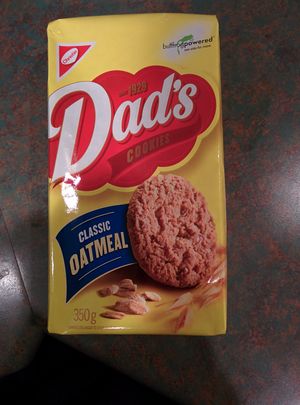 |
It's a perfect snack for almost all situations, whether it's for breakfast, between classes, or even late at night. It's readily available and I can always choose how much I feel like eating. | 1. What goes into the cookies that allow for such a long shelf life? How does it taste this good even after the best before date? (A: Most likely the method of preservation for cookies would be extrusion drying, due to the fact that many snack foods are processed through this method, which allows for products to be puffed and cooked. Drying increases the shelf life by quite a bit, which gives cookies such a long shelf life)
2. Why does the package clearly specify it to be "Oatmeal" but has such little nutrition value that oatmeal usually has, such as fibre? (A: For it to be labelled oatmeal it has to fall under certain set standards which regulate the way that products are catagorized) 3. Is there any regulation that states what portion of cookies the nutritional facts have to be based upon (Such as 2 cookies, or 4 cookies)? (A: We didn't really go through the nutritional facts of the cookies. However, I believe that there is usually a standard that most companies would follow - Eg. Most cookie production companies would all use 2 or 4 cookies as the standard of serving size) 4. Does the best before date only apply to the cookies if they are not opened or are they apply even to the cookies that have been opened? (A: Best before date usually apply to the cookies, regardless of whether they are opened are not. It doesn't mean that the cookies will be inedible, it just states that there may be certain unfavourable changes towards the cookies, such as the cookies getting stale or losing flavour) 5. Do the different types of Dad's Cookies go through different processing if they are different flavours (Comparing raisin to oatmeal, do they go through varied processing or is the addition of raisin the only different step)? (A: Although we didn't really go through this topic, I would assume that the only difference is the addition of raisins would be a new step. I do not think that the cookies themselves would go through a varied process, rather the cookies and raisin would have different processing methods before being put together) |
| Hwong | 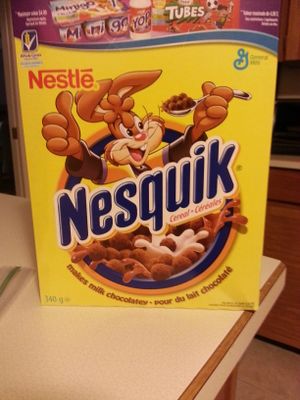 |
I chose Nesquik cereal because love the taste of chocolate embedded in breakfast. I usually enjoy it with milk since it also makes the milk have a chocolate taste, but also makes a great snack in between classes or on the bus when there is no milk around. | 1)I noticed that the main ingredient in this cereal is whole grain corn. What are the advantages of using corn instead of wheat? (A: If I had to guess, there is no real preservation advantage in using corn over wheat as an ingredient in cereal. It all comes down to what type of ingredients the cereal calls for, because using corn will probably yield a more suitable taste and texture than wheat.)
2) There is a best before date noted on the top of the cereal box, but what is its expiration date? (A: The expiration date varies with different types of cereal. From FNH 200, we only know that the best before date is the suggested date that the food should be consumed before, while the expiration date lets you know how long the food will last before you will become sick from consuming it. Typically, according to http://www.eatbydate.com/grains/cereal/cereal-shelf-life-expiration-date/, the shelf life of a box of opened cereal will expire in 4-6 months.) 3) The cereal box shows off how Nesquik cereal is a good source of fibre, yet it only has 2 grams of fibre per 30g serving. Is this really a good source of fibre for cereal, since there are many other types of food out there that contain much more fibre per serving. (A: From lesson 4, we have learned about the requirements in order to make a nutrient claim about a food product. In order to make a a claim about a certain food being a "good source of fibre", it must have 2g of fibre per serving, which Nesquik cereal just meets. 4) How much of the original nutritional value of wheat is lost after the process of turning it into this cereal? (A: Although lesson 11 talks about the loss of nutrients due to food processing, it does not say how much of the original nutrient content of any food is lost. Instead of quantifying nutrient loss, I suspect that that Nesquik loses its nutrient content due to moisture. It is packed in a plastic bag with air inside, so to a certain degree, some moisture is bound to be in the bag. Light should not be much of a factor since it is also packed in cardboard boxing.) 5) Nesquik cereal has a high sugar content. Does this help with the preservation of the food? (A: In lesson 2, we learned a lot about sugars and we can definitely say that sugar is used as a preservative by binding water needed by microorganisms. |
| MengRanWu | 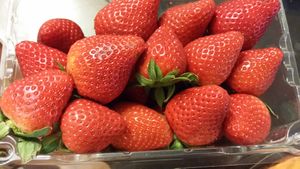 |
I love fruits and strawberry is one of my favorite fruit. I like it fresh or frozen. I usually make strawberry banana smoothie with it, and also add it to my plain yogurt. |
1)Why do the fresh strawberries always go bad so quickly? 2)Frozen strawberries last a lot longer, but is it not as nutritious as fresh ones? 3)Do organic strawberries actually contain more nutritious value? 4)What are the normal sizes for strawberries? I have seen giant strawberries before, but they look abnormally big. 5)Is it bad to consume too many strawberries? Assignment#3: 1. Refer to Lesson 5, fresh strawberries are perishable foods that are not processed. Therefore, they usually have a short shelf life (less than 60 days). The spoilage of fresh strawberries is caused by senescence. Senescence is the deterioration of tissues in fresh fruits or vegetables when nutrients needed for respiration are used up. So, we see that the strawberries becomes soft and changes color day after day. 2. Frozen strawberries have a reduced amount of nutrients compared to non-processed fresh strawberries. The freezing preservation method causes loss of nutrient value, such as vitamins. (Lesson 7 & 11) 3. This question is not addressed in the lessons but I remember learning something that is related from another course at UBC (LFS250). Organic fruits refer to fruits that are treated with natural fertilizers and pesticides. Unlike the regular strawberries, treated with chemical and synthetic fertilizers and pesticides, the organic are more safe and healthy for consumption. I do not know if the organic strawberries have higher nutrient value but they are definitely harmless to our body compared to the regular ones. 4. Refer to Lesson 4, the regulation of strawberries in Canada is controlled by the Canadian Food Inspection Agency. On the official websites, it stated that a minimum diameter of 5/8 of an inch for Early Bird, Dunlap and Everbearing varieties and a minimum diameter of 3/4 of an inch for all other varieties is required. 5. Strawberries contain sucrose, also known as table sugar. Though it is not discussed in the lectures that if eating too much strawberries is bad or not, nothing should be overly consumed. There is a saying which tells us that eating too much of anything is bad for us. So, even though strawberries do not contain high sugar content, consuming too much of them can still build up the sugar content in our body. Also, it can be potentially harming for diabetic people. It is always good to have a balanced diet. |
| ChaseWilson | 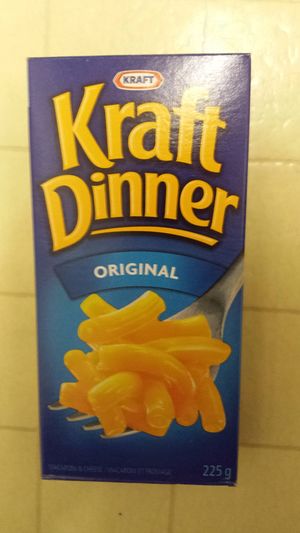 |
I have eaten Kraft Dinner for years and have always enjoyed it for a quick meal or snack. I have also tried adding other cheeses and ingredients to try something different. There are many other flavours, although, the original is my favorite. | 1) How is the pasta made/dehydrated? The dry cheese mix? 2) It can be prepared on the stove or in the microwave, how is this possible? Is there a difference in the 2 cooking methods? 3) There is a best before date, but does it ever expire? (Seems like it lasts forever). 4) It claims to be "a good source of calcium, protein, and iron", is this true? and if so where from? 5) Is the cheese sauce actually cheese? (eg. would someone lactose intolerant have problems eating it?)
1) In lesson 8 we learned that pasta is dehydrated by tray drying, the noodles would be placed on trays or racks and exposed to heated air at a set velocity. Also in lesson 8, we learned about spray drying being used to dry liquids like milk so I would say this is how the cheese mix is dehydrated. 2) We didn't really talk about the differences, but I would say can be cooked either way because you are just trying to rehydrate the noodles, and both methods are a way to heat up the liquid and rehydrate it. 3) In lesson 4 we talked about the packaging requirements and how this best before date is required. We talked in class about how there is a difference between best before and expiration date. I would say that because the ingredients are so well preserved that it can last a very long time. 4) By looking at the labeling website products are allowed to put these labels outside of the nutrition facts tables. Per serving kraft dinner has 7g of protein, 10% daily calcium, and 15% daily iron. These would be present in the cheese mix and the milk that is added when you prepare it. 5) In looking closer at the kraft dinner ingredients list, it says the cheese sauce is dried whey from milk. This would mean that there is lactose in the product, even before you add milk when preparing it. Someone lactose intolerant should avoid it. |
Your Real Family Name that Starts with X
Your Real Family Name that Starts with Y
Your Real Family Name that Starts with Z
- ↑ http://www.facts-about-chocolate.com/how-is-chocolate-made/
- ↑ http://en.wikipedia.org/wiki/Types_of_chocolate
- ↑ http://news.psu.edu/story/141242/2008/06/20/research/probing-question-which-healthier-dark-or-milk-chocolate
- ↑ http://www.esgreen.com/info/about-dried-tangerineor-orange-peel-chen-pi/
- ↑ http://www.sparkpeople.com/blog/blog.asp?post=how_much_sugar_is_in_your_favorite_fruit
